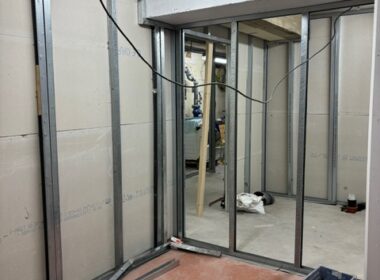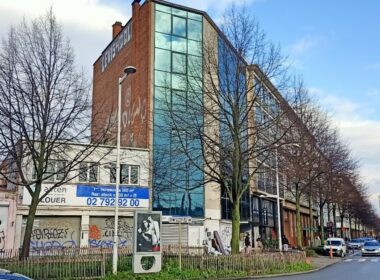This year’s droughts, forest fires, severe weather and floods have only served to heighten awareness of climate change and the urgent need to ‘do something’. Particularly as some can see the first alarming signs of climate change running out of control. As a result, the objectives of the European Green Deal remain meaningful. But the Green Deal goes further than drastically limiting greenhouse gas (GHG) emissions as it has the broader aim of reducing our footprint on the environment as a whole. And as building stock has a significant impact on the environment, accounting for a large proportion of energy consumption and GHG emissions, it is important that it be renovated as quickly as possible to make it both energy-efficient and environmentally friendly, while keeping housing affordable and accessible.
To meet Europe’s self-imposed climate objectives, it is generally accepted that an average of 3% of the building stock should undergo major renovation every year. But this rate is far from being reached year after year. Every year in which this rate is not achieved intensifies the work that will have to be done in the years to come.
Making buildings more energy-efficient means effectively reducing heat loss and the associated energy demand. Compensating for inadequate insulation with ‘tricks of the trade’ such as generating renewable energy to obtain a good EPB category, but avoiding the renovation and insulation of the building envelope, does nothing to limit the amount of heat that continues to escape. Heat demand and energy consumption remain unnecessarily high as the heating system required is larger and more expensive to install and operate.
And many simplify the approach to environmental performance by assuming that using bio-sourced materials is sufficient. While it is true that basic bio-based materials have a low environmental footprint a priori, this forgets the impact of cultivation, harvesting, transport, as well as any binders, preservatives, etc. Simply put, environmental performance means limiting the environmental footprint (emissions, discharges, impact on biodiversity, etc.) and resource consumption (raw materials, energy, water, etc.) of a building throughout its life cycle. In other words, the notion of sustainable construction or environmental performance is assessed on a building level and goes beyond simply using “sustainable” materials. In everyday life too, what counts is the performance of the finished products, often communicated by a label, as is the case for electrical household appliances, for example. Focusing on the individual performance of each component does not guarantee that combining them will result in efficiency and ensure the optimal operation of the appliance in question.
As with the energy performance of buildings as stated on the PEB certificate, the Regions are also making available an online ‘calculator’ to assess this sustainability or environmental performance. This tool, called TOTEM (Tool to Optimise the Total Environmental Impact of Materials), was developed by the three Regions on the basis of scientifically-backed European standards. It enables the environmental performance of buildings to be assessed using over a dozen environmental impact indicators (global warming, ozone layer, emissions, use of resources, biodiversity, etc.), grouped together into EPDs (Environmental Product Declarations).
And just as the EPB regulations encourage manufacturers to compete and develop ever more energy-efficient building materials and systems, the introduction of TOTEM will do the same for environmental performance.
TOTEM is still only rarely used spontaneously. This is hardly surprising, in fact, since a designer wanting to optimise environmental performance while taking into account the other constraints of the project has to ‘juggle’ different individualised computer applications. This is not very user-friendly and also rather outdated. The applications have to be integrated, or at the very least there has to be an interface that allows the simultaneous calculation and optimisation of PEB and TOTEM performance, while also taking the other project constraints into account.
Many see the announced renovation package as an opportunity to develop a sector with its share of local activities and jobs, including positive diversification to redevelop local agriculture and forestry. But can we afford to ignore other ‘classic’ materials?
The wave of renovations needed to meet the climate targets cannot be held back by a lack of available materials. The fundamental question is whether any single sector will be able to meet the huge demand for materials. How will the security of supply be guaranteed? And where applicable, what impact will this have on the supply and prices of basic foodstuffs? We must avoid a repeat of the biofuels episode, where the question of ‘food or fuel’ arose after the sector was launched. In other words, it is important not to jump in head first and improvise. A minimum of preliminary study and modelling is required.
The renovations will also release large quantities of waste, consisting mainly of ‘conventional’ materials that should not be discarded any old how. Some materials can be reused or recovered relatively easily, if necessary by reconditioning. Others can be recycled. The possibilities for recycling are constantly expanding, thanks to ongoing advances and technological prowess. This could be yet another argument in favour of maintaining the local production of ‘conventional’ materials, unless we can overcome the legal, administrative and logistical obstacles to exporting this waste to sites abroad where it can be recycled.
There is clearly no room for improvisation when it comes to renovating buildings to make them more energy-efficient and environmentally friendly. The large quantities of materials required, as well as the construction waste produced, offer opportunities for diversification, employment and economic activity. We must make the most of them if we are to achieve our climate objectives, preserve the environment and ensure our well-being. Once again, the popular wisdom regarding not putting all your eggs in one basket seems to make sense. Doing without certain materials could be detrimental. In this context, the objective assessment tools that are the PEB calculator and TOTEM should serve as a guide to achieving the targeted performances. We are sure that performance optimisation and other constraints will soon become even easier.
Author: Philippe CALLEWAERT – BMP/PMC
Read also: Low tech as a way to mitigate the hidden environmental impact of buildings; Wood construction, a pillar of Europe’s Green Deal; Designing future renovations; Collaborate with Hautes Écoles researchers from the SynHERA network to bring your innovation projects to life; How does climate change influence architecture?





